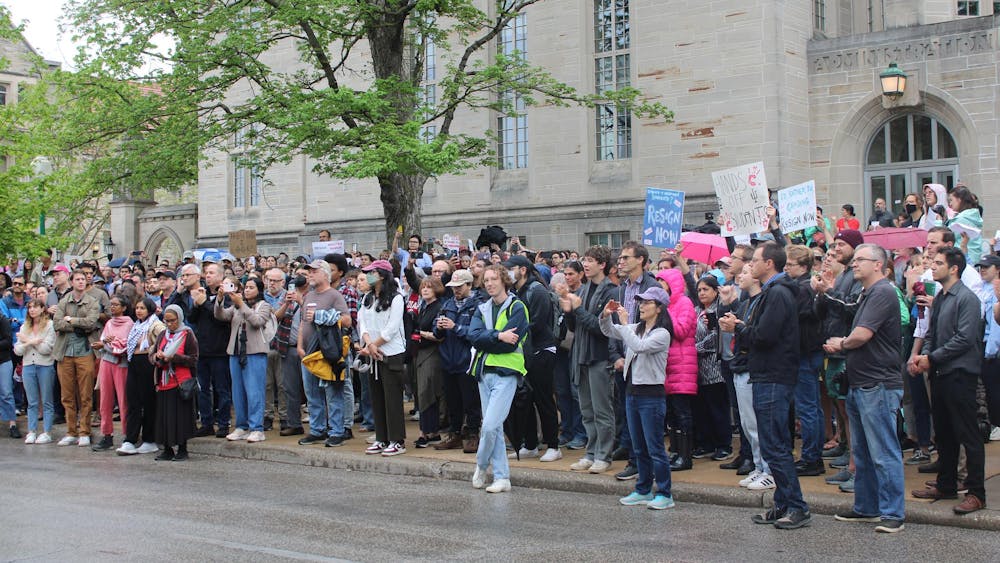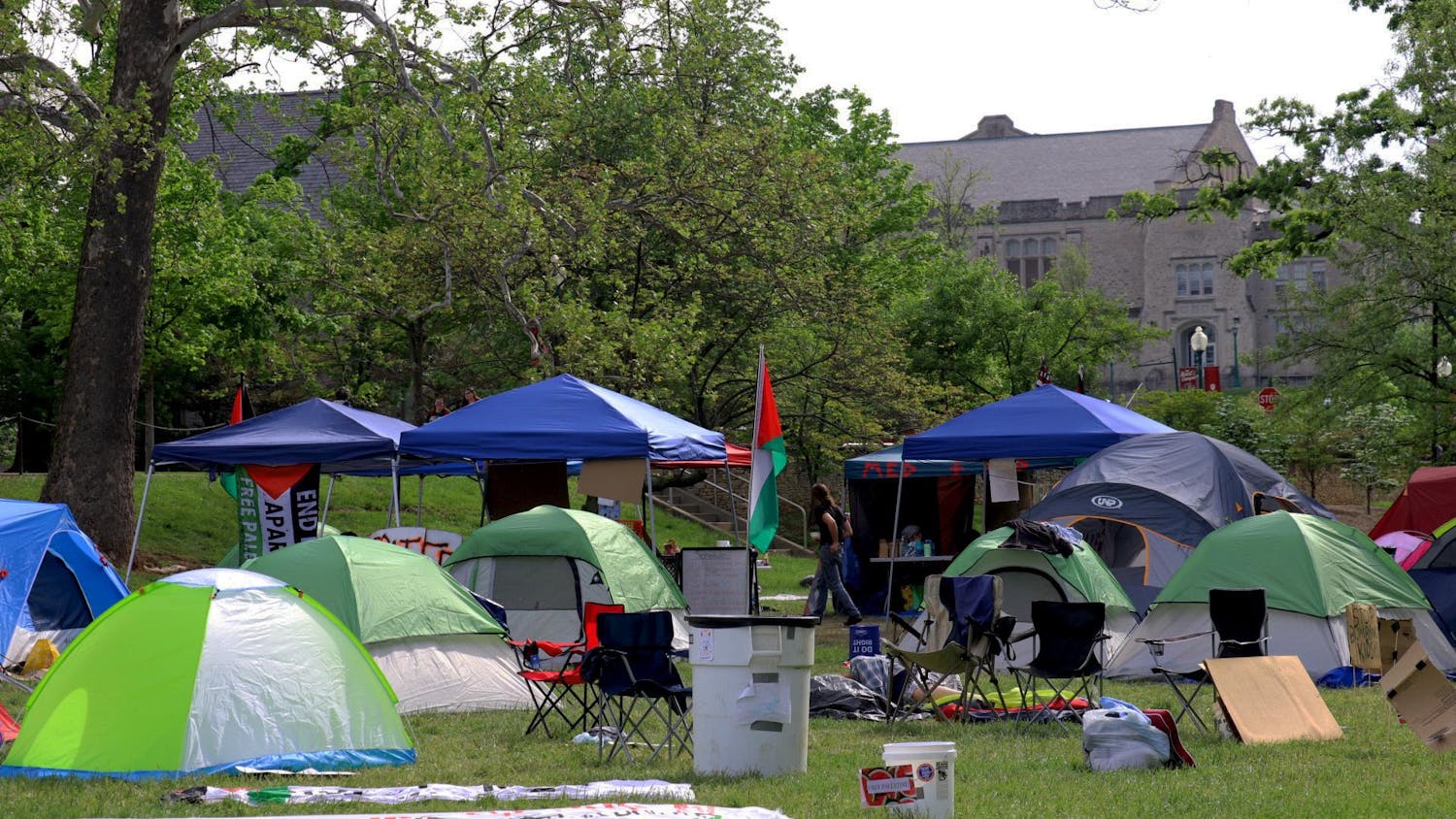In light of October being Domestic Violence Awareness month, different community groups and Bloomington locals met Oct. 21 to discuss how Bloomington could better understand the issue and help victims of domestic violence.
These different groups form the Monroe County Domestic Violence Coalition.
Bloomington Police Department Sgt. Pam Gladish, a member of the coalition who has worked on domestic violence cases for about 15 years, said domestic violence is a scary issue for people to try to discuss.
“It’s bad,” Gladish said. “We don’t want to talk about it.”
Gladish pointed out statistics that showed in January 2015, more than 6,000 United States troops had been killed in Afghanistan and Iraq. She compared that figure to the more than 14,000 women and almost 4,000 men who were victims of homicide from domestic violence.
“We’ve lost more people to domestic violence than to war,” Gladish said.
Statistics for Monroe County, provided by Middle Way House’s legal advocate Heather Davis, show Middle Way House had 86 clients for domestic violence in September. However, records provided by Cheryl Gafken, Monroe County Prosecutor’s Office domestic violence victim assistant, tell a different story.
The number of charged arrests for domestic violence is much lower, at only 12 for September. Carol McCord, the associate dean of students at IU, said it made sense from her experience.
“The vast majority of people don’t go through law enforcement,” McCord said. “Although, just because you don’t go to the police doesn’t mean it didn’t happen.”
IU Police Department Lt. Andy Stephenson said the focus of law enforcement has always been on getting the victim to services and then getting justice against the abuser. To do that, the coalition needs to promote a greater willingness to talk to police.
“I think it’s important for us to identify offenders,” Stephenson said. “This is a pattern.”
Davis said they could ask additional questions of their clients and about previous contact with police, but the information is up to the client to give.
“A lot of people don’t tell us they’ve contacted the police,” Davis said.
In circumstances where victims do end up contacting the police, it can often be frustrating to the officers as they try to break the cycle of violence, Gladish said.
The cycle is made up of three sections: tension building, explosion and the honeymoon phase.
“It’s a control issue,” Gladish said. “How do I control the victim?”
Tension building happens as the batterer begins to feel like they are losing control of the victim or the victim is in danger of becoming independent of the abusive relationship. Gladish said the explosion is when that tension finally gets released.
“That’s when it’s going to get physical,” Gladish said.
The next stage, the honeymoon stage, happens because of the physical or emotional abuse from the explosion. Gladish said in this stage abusers use flowers, gifts and attention to make the abused feel beholden to them.
At Bloomington Citizen’s Academy on Tuesday, Gladish said economic independence is one of the major reasons why women and men stay in abusive relationships.
Gladish said she knew a woman who would hide five dollars every time her husband beat her. One day, after 10 or 12 years, she finally left her home and never came back.
“He didn’t find her for a long time,” Gladish said. “I was pretty happy about that.”
Gladish said not all victims are women, and the major difference is men do not call when they are abused.
“You can be a suspect or a victim and be male or female,” Gladish said.
Indiana has also passed a new law that changed exactly what was labeled as domestic violence. The new law expands the legal definition of domestic battery to someone related by marriage, blood or adoption. A person does not just have to be a spouse.
Every time police receive a call and speak to a victim, officers ask the victim if they would like help from services like Middle Way House. This is not always provided by the service groups, but Gladish said law enforcement is meant to bring resources to people who have been battered and abused.
“That’s the biggest thing,” Gladish said. “We want to get them to services.”





